Robert Frank
American, born Switzerland. 1924–2019
MoMA’S FIRST EXHIBITION DEDICATED TO ROBERT FRANK COINCIDES WITH THE ARTIST’S CENTENNIAL
Life Dances On: Robert Frank in Dialogue
September 15, 2024–January 11, 2025
Floor Three, The Edward Steichen Galleries (3 South)
BY EGW LUXURY MAGAZINE Fall /Winter 2024
The Museum of Modern Art presents Life Dances On: Robert Frank in Dialogue, an exhibition that provides new insights into the interdisciplinary and lesser-known aspects of photographer and filmmaker Robert Frank’s expansive career. On view from September 15, 2024, to January 11, 2025, the exhibition delves into the six decades that followed Frank’s landmark photobook The Americans (1958) until his death in 2019, highlighting his perpetual experimentation and collaborations across various mediums. Coinciding with the centennial of the artist’s birth, and taking its name from his 1980 film, Life Dances On explores Frank’s artistic and personal dialogues with other artists and with his communities. The exhibition features more than 250 objects, including photographs, films, books, and archival materials, drawn from MoMA’s extensive collection alongside significant loans.
Life Dances On: Robert Frank in Dialogue is organized by Lucy Gallun, Curator, with Kaitlin Booher, Newhall Fellow, and Casey Li, 12-Month Intern, Department of Photography.
“This exhibition offers visitors a fresh perspective on this beloved and influential artist,” said Gallun. “The enormous impact of Frank’s book The Americans meant that he is often remembered as a solo photographer on a road trip, a Swiss artist making pictures of an America that he traversed as an outsider. And yet, in the six decades that followed, Frank continually forged new paths in his work, often in direct artistic conversation with others, and these contributions warrant closer attention. The pictures, films, and books he made in these years are evidence of Frank’s ceaseless creative exploration and observation of life, at once searing and tender.”
Robert Frank’s restless, gritty, melancholic vision marked him as an astute documentarian of the postwar American landscape. Born into a German-Jewish family in Zurich in 1924, he developed an interest in photography at an early age and apprenticed with several photographers in his teens. In his early twenties, his intrepid nature brought him to America, in 1947, where he found work as a commercial photographer, most notably at Harper's Bazaar under Alexey Brodovitch’s highly influential editorial vision.
He soon left this relatively stable position for an itinerant life. At one point, he served as an assistant to Walker Evans, whose photobook American Photographs (1938) set a precedent for Frank’s subsequent accomplishments. Bill Brandt’s A Night in London (1938) and André Kertész’s Day of Paris (1945) are other key books that helped him formulate his own point of view.
The publication of Frank’s photobook The Americans, first released in France in 1959 and subsequently printed stateside in 1960, caused nothing short of a revolution among photographers and documentarians. Shortly after its release, Popular Photography magazine published editorial reactions. One critic lamented, “Ugliness can be shocking, it can have impact—like a man spitting in your face: but it can also be given beauty by a sensitive photographer. Frank is sensitive, but apparently he is without love. There is no pity in his images. They are images of hate and hopelessness, of desolation and preoccupation with death. They are images of an America seen by a joyless man who hates the country of his adoption.” Another editor countered, “The fact is simply that he feels strongly about some of the things he sees in his adopted country, and wants to call them to our attention. He does it superbly.”
“I was very free with the camera. I didn’t think of what would be the correct thing to do; I did what I felt good doing.”
—Robert Frank
In a country that was not his own, Frank assumed the unique position of an outsider and voyeur who unobtrusively captured the tensions of the geographic, economic, racial, and religious diversity of the US. After receiving a Guggenheim Fellowship in 1954, he made numerous cross-country car trips over a period of 10 months, ultimately logging 10,000 miles. He used a handheld camera to present a picture of the US that was provocatively out of sync with the insistent optimism that often characterized Americans' postwar sense of self. The 83 photographs comprising The Americans record cars, jukeboxes, bureaucracy, leisure, youth culture, high society, crowded urban streets, desolate open plains, politics, race, and religion. Frank captured the nation as a messy corpus, never privileging city or country, black or white, Jew or Christian, rich or poor. In the wake of this achievement, subsequent generations of photographers, beginning with Diane Arbus, Lee Friedlander, and Garry Winogrand, have paid close attention to his example.
From the late 1950s through the early 1970s, Frank dedicated himself almost exclusively to moving images. His cinematic achievements have been widely heralded since the release, in 1959, of his first film, Pull My Daisy, codirected with Alfred Leslie and adapted by Jack Kerouac from his own play. The film visualizes the energy and syncopation of the Beat Generation by featuring literary figures such as Allen Ginsberg, Peter Orlovsky, and Gregory Corso, among many others.
Its improvised, freewheeling structure set the tone for Frank’s subsequent films, including Me and My Brother (1965–68), Conversations in Vermont (1969), and Cocksucker Blues (1972).
By 1973, when Frank moved to Mabou, Nova Scotia, he had returned to making photographs, but now they expressed a more personal, filmic sensibility. His work increasingly featured multiple frames in a single image, roughly spliced together with urgent, plaintive, halting words scrawled across them—a cry to connect both text and image in reading this autobiography. These works have no allegiance to any particular process, format, or method; they combine Polaroids, 35mm negatives, collage, photomontage, stenciling, handwriting, scratching, and splicing. The artist’s decision to reveal so much personal history—from the death of his daughter Andrea to his own hospitalization—seems to have required that these difficulties find a physical parallel in the finished objects. At heart, Frank’s work has never been about news or history, but rather the individual human experience.
Exhibition Details:
Organized loosely chronologically, Life Dances On focuses on the theme of dialogue in Frank’s work and reflects on the significance of individuals who shaped his outlook. Frank’s own words are present throughout the exhibition—in the texts he scrawled directly onto his photographic negatives, in the spoken narrative accompanying his films, and in quotes woven into the exhibition catalogue published by MoMA in conjunction with the exhibition. Also revealed throughout the exhibition is Frank’s innovation across multiple mediums, from his first forays into filmmaking alongside other Beat Generation artists, with films such as Pull My Daisy (1959), to the artist’s books he called “visual diaries,” which he produced almost yearly over the last decade of his life.
By focusing on dialogue and experimentation, the exhibition explores such enduring subjects as artistic inspiration, family, partnership, loss, and memory through the lens of Frank’s own personal traumas and life experiences. Among the works presented in the exhibition is a selection of photographs drawn from Frank’s footage for his 1980 film Life Dances On. These works reflect on the significance of individuals who shaped Frank’s own outlook—in this case, his daughter Andrea and his friend and film collaborator Danny Seymour. Like much of his work, the film finds its setting in Frank’s own communities in New York City and in Cape Breton, Nova Scotia, where he and his wife, the artist June Leaf, moved in 1970. An abundance of material was loaned to the exhibition by the June Leaf and Robert Frank Foundation, including works from the artist’s archives that are shown publicly for the first time, as well as personal artifacts, correspondence, and book maquettes.
Written by Monica Lofstrom
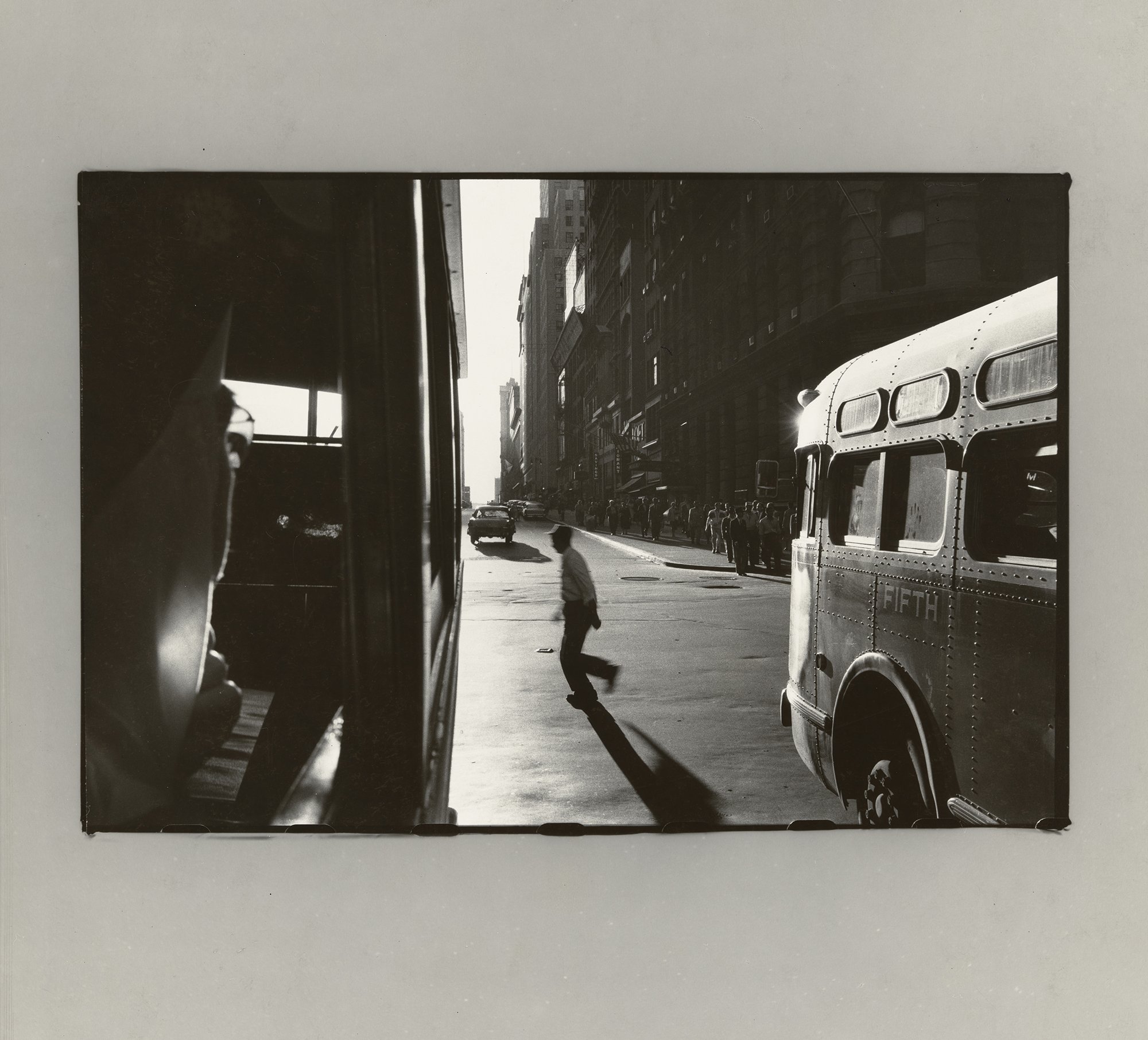
Robert Frank. From the Bus, New York. 1958. Gelatin silver print, 13 15/16 × 13 1/4″ (35.4 × 33.7 cm). National Gallery of Art, Washington, DC. Robert Frank Collection, Robert B. Menschel Fund. © 2024 The June Leaf and Robert Frank Foundation
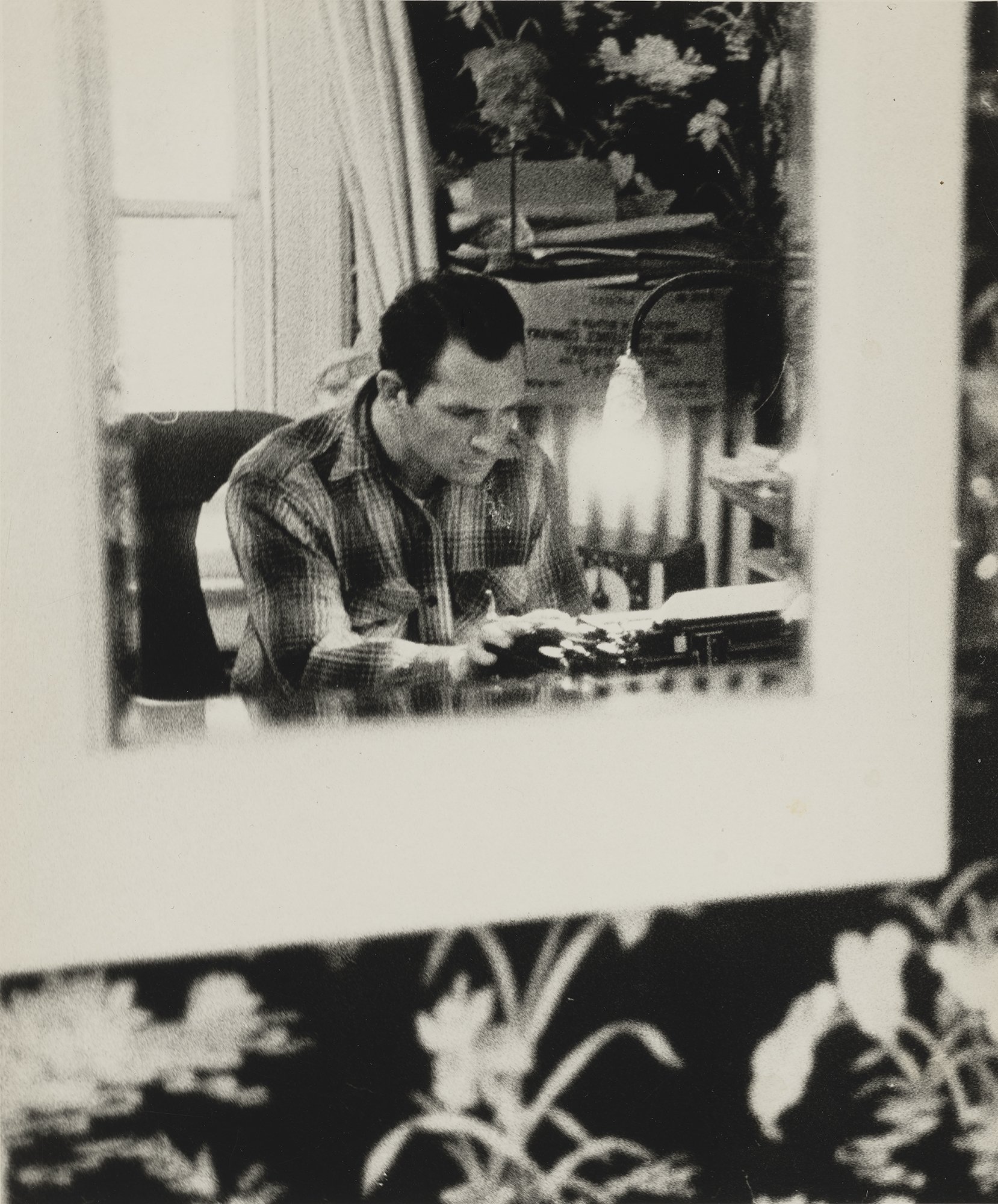
Robert Frank. Jack Kerouac. 1959. Gelatin silver print, 10 ⅞ x 8 5/16” (27.7 x 21.1 cm). National Gallery of Art, Washington, DC. Robert Frank Collection, Gift of Robert Frank. © 2024 The June Leaf and Robert Frank Foundation
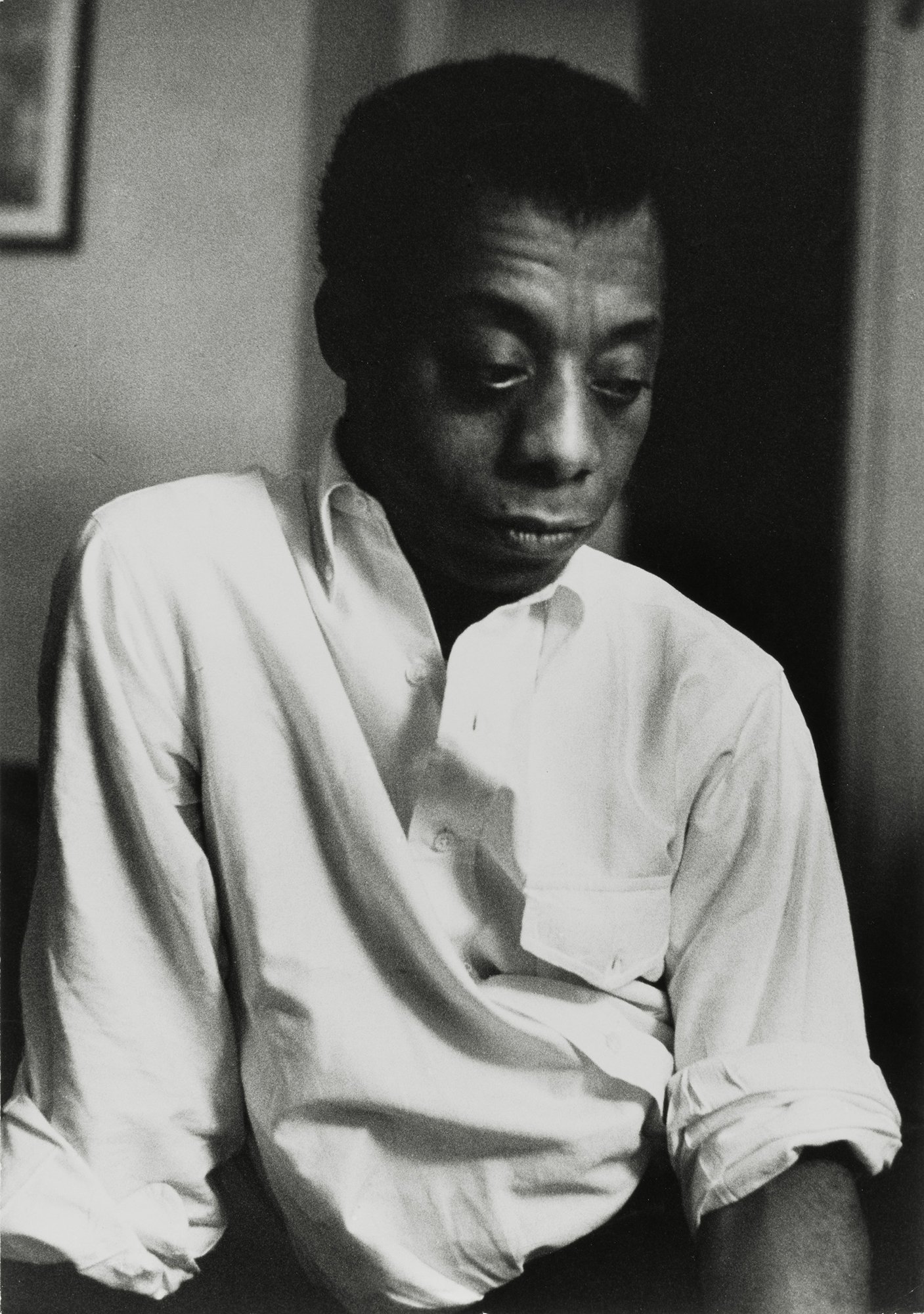
Robert Frank. James Baldwin. c. 1963. Gelatin silver print, 13 15/16 × 9 13/16″ (35.4 × 24.9 cm). The Museum of Modern Art, New York. Gift of the artist. © 2024 The June Leaf and Robert Frank Foundation

Robert Frank. Cocksucker Blues. 1972. Gelatin silver print, 19 7/8 × 15 7/8″ (50.5 × 40.3 cm). The June Leaf and Robert Frank Foundation. © 2024 The June Leaf and Robert Frank Foundation

Robert Frank. Andrea. 1975. Five gelatin silver prints and ink on paper, 10 15/16 × 13 7/8″ (27.8 × 35.2 cm). The Museum of Modern Art, NY. Gift of the June Leaf and Robert Frank Foundation in honor of Clément Chéroux and Lucy Gallun. © 2024 The June Leaf and Robert Frank Foundation

Robert Frank. Mabou. 1977. Gelatin silver print, 7 5/16 × 19 5/16″ (18.5 × 49 cm). The Museum of Modern Art, New York. Gift of Robert and Gayle Greenhill. © 2024 The June Leaf and Robert Frank Foundation
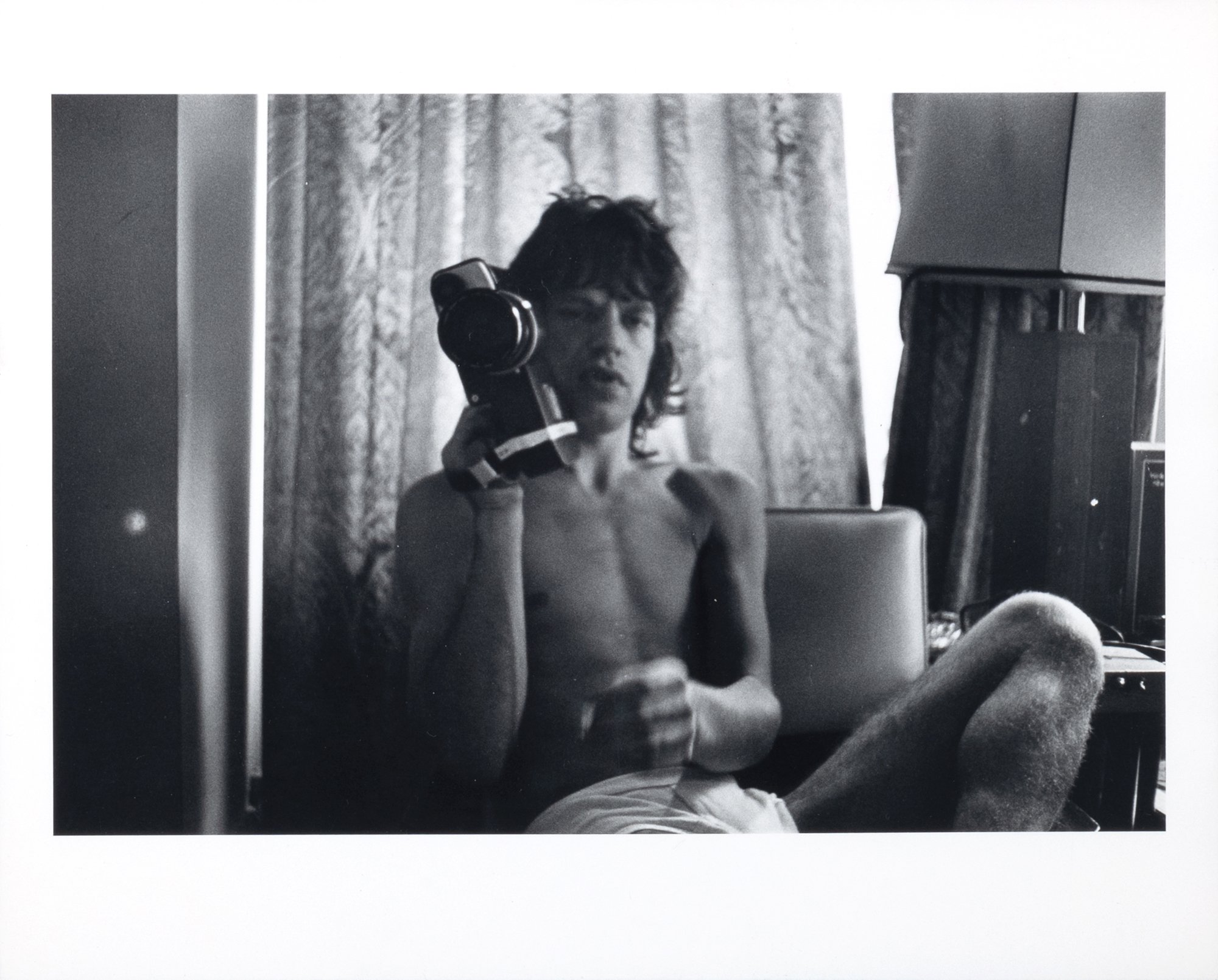
Robert Frank. Untitled (from Cocksucker Blues). 1972. Gelatin silver print, 8 × 9 15/16″ (20.3 × 25.2 cm). The June Leaf and Robert Frank Foundation. © 2024 The June Leaf and Robert Frank Foundation

Robert Frank. Pablo’s Bottle at Bleecker Street, New York City. 1973. Gelatin silver print, 19 13/16 × 15 7/8″ (50.3 × 40.3 cm). The Museum of Modern Art, New York. Promised gift of Michael Jesselson. © 2024 The June Leaf and Robert Frank Foundation
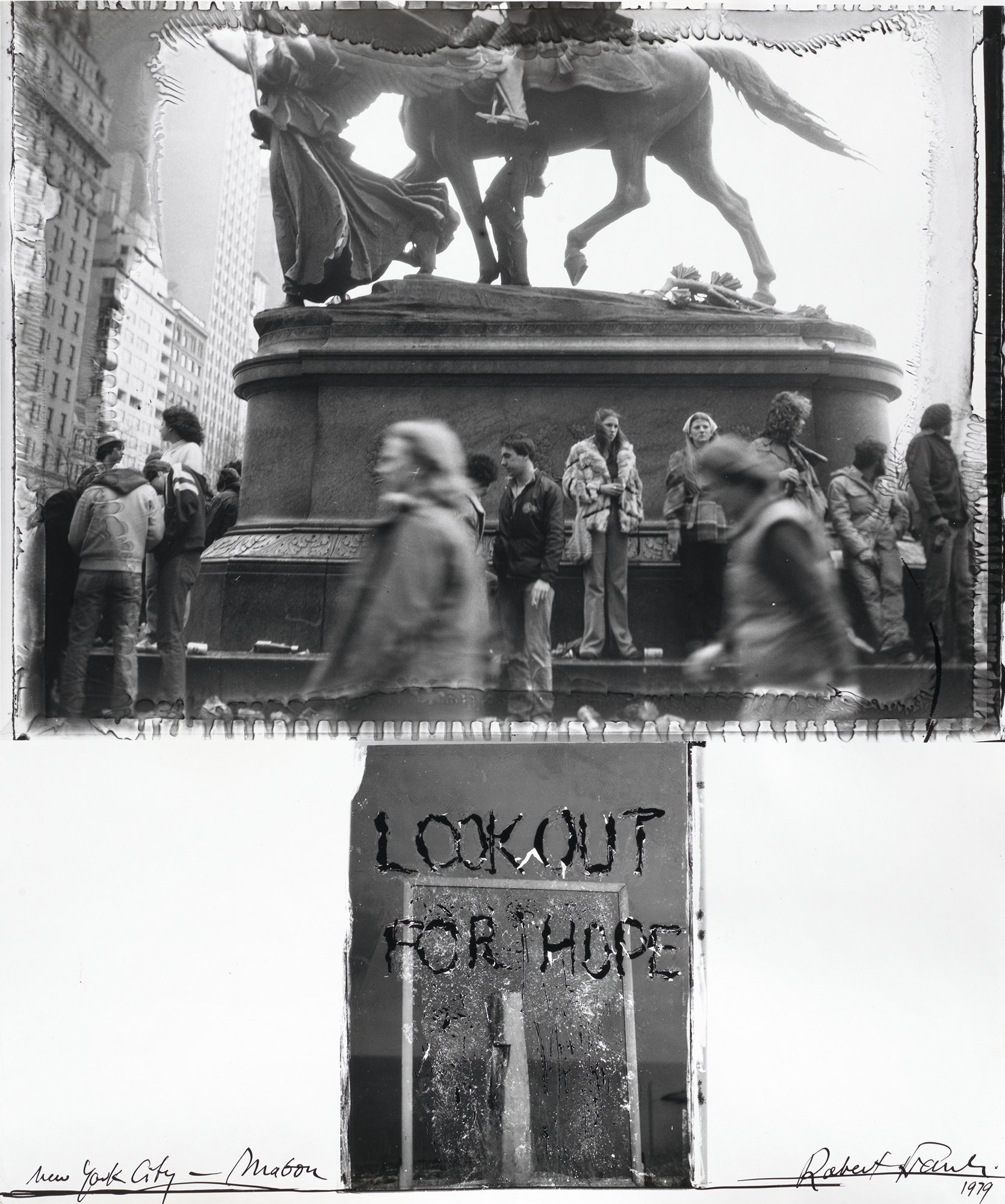
Robert Frank, Look Out for Hope, Mabou—New York City. 1979. Gelatin silver print, 23 3/4 × 19 7/8″ (60.3 × 50.5 cm). The Museum of Modern Art, New York. Promised gift of Michael Jesselson. © 2024 The June Leaf and Robert Frank Foundation
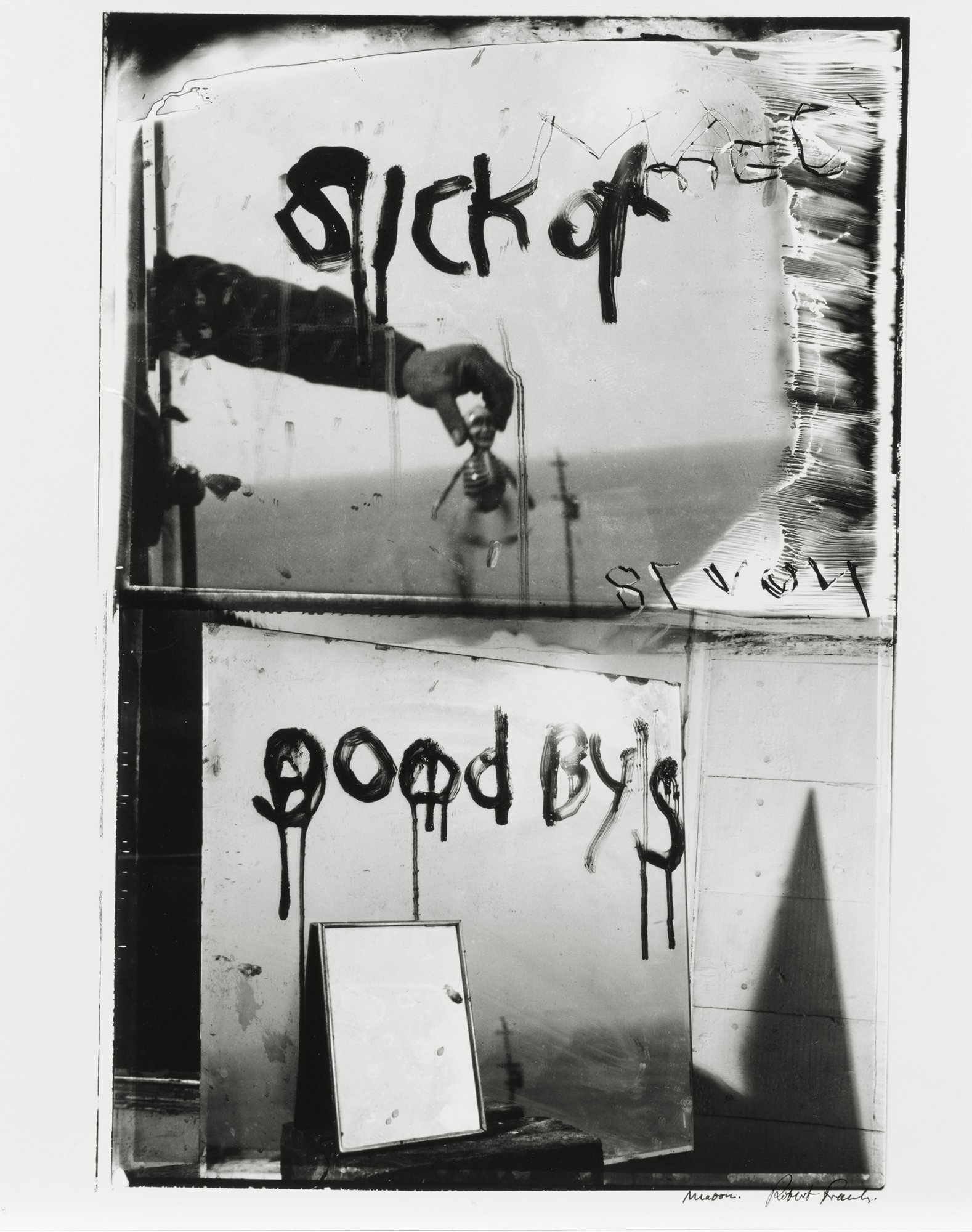
Robert Frank. Sick of Goodby’s. 1978. Gelatin silver print, 21 15/16 × 12 11/16″ (55.8 × 32.3 cm). The Museum of Modern Art, New York. Purchase. © 2024 The June Leaf and Robert Frank Foundation
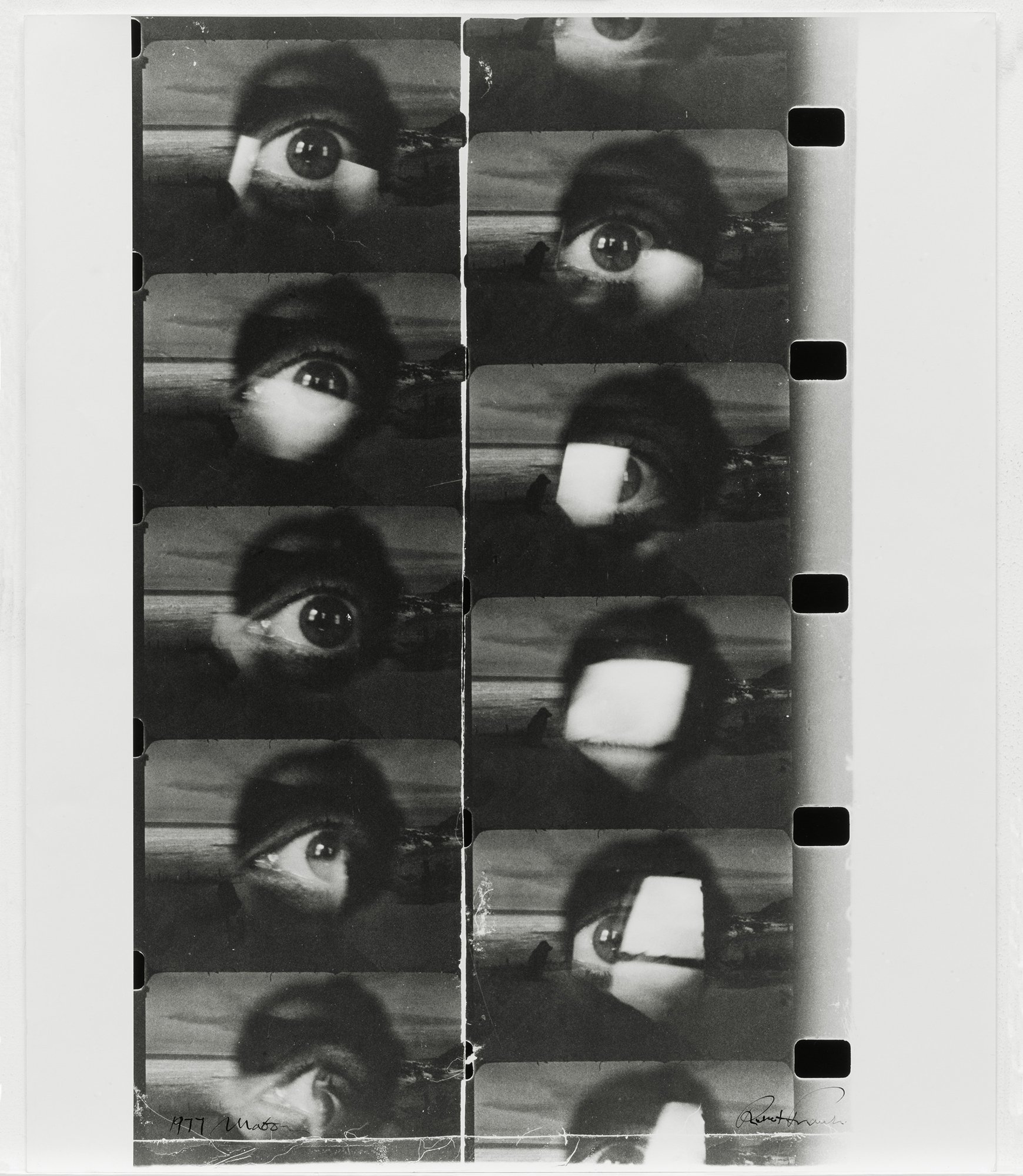
Robert Frank. Mabou Winter Footage. 1977. Gelatin silver print, 23 11/16 × 14 3/4″ (60.1 × 37.5 cm). The Museum of Modern Art, New York. Acquired by exchange with the artist. © 2024 The June Leaf and Robert Frank Foundation
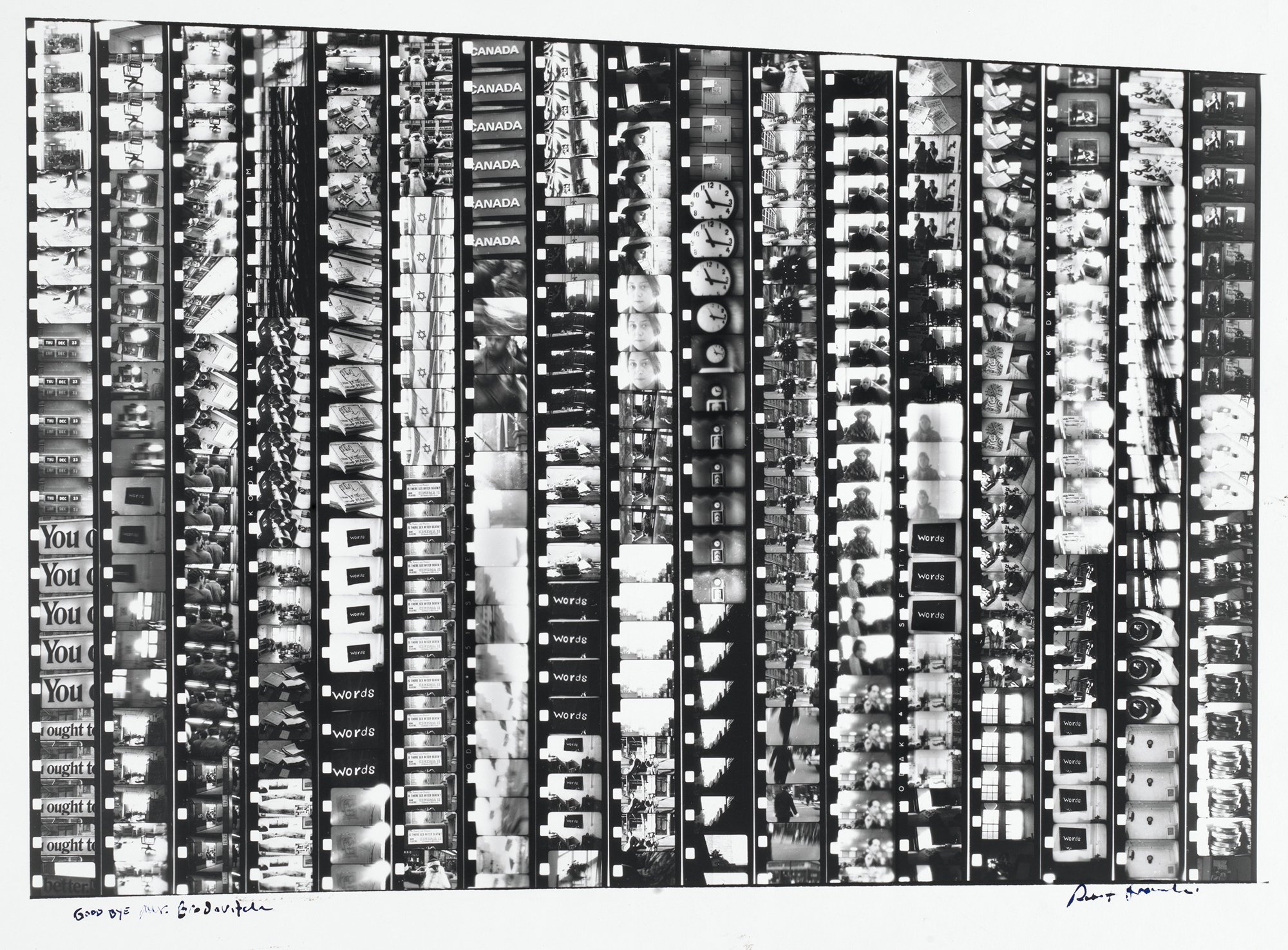
Robert Frank. Goodbye Mr. Brodovitch—I Am Leaving New York. 1971. Gelatin silver print, 15 7/8 × 19 15/16″ (40.3 × 50.6 cm). The Museum of Modern Art, New York. Promised gift of Michael Jesselson. © 2024 The June Leaf and Robert Frank Foundation
To celebrate the centennial of Robert Frank’s birth, the Museum of Modern Art (MoMA) is launching "Life Dances On: Robert Frank in Dialogue," a groundbreaking exhibition that delves into the often-overlooked aspects of the photographer and filmmaker’s extensive career. This exhibition explores the six decades following his iconic photobook, The Americans (1958), until his death in 2019, emphasizing his continuous experimentation and interdisciplinary collaborations. It features over 250 objects, including photographs, films, books, and archival materials from MoMA's collection and notable loans, offering a comprehensive view of Frank's creative evolution.
Exhibition Overview:
The exhibition, organized by Lucy Gallun, Curator in the Department of Photography, with Kaitlin Booher and Casey Li, is loosely structured in chronological order and centers around the theme of "dialogue"—not only between Frank and other artists but also with his own creative development. It highlights his innovative use of mediums beyond photography, such as filmmaking and artist’s books. The show presents Frank’s ongoing creative conversations with key figures in his life and work, focusing on subjects like artistic inspiration, family, partnership, loss, and memory.
Featured Works and Themes:
Multimedia Exploration: The exhibition showcases Frank's forays into film and visual diaries, demonstrating his desire to transcend traditional photographic boundaries. His 1980 film, Life Dances On, from which the exhibition takes its name, reflects on his personal relationships and community, notably with his daughter Andrea and film collaborator Danny Seymour.
Dialogues with the Past: Through archival materials, personal artifacts, and never-before-seen footage, the exhibition traces Frank’s life and artistic journey, including his significant periods in New York City and Cape Breton, Nova Scotia, where he lived with his wife, artist June Leaf.
Previously Unseen Installations: A companion installation, Robert Frank’s Scrapbook Footage, created by his long-time film editor Laura Israel and art director Alex Bingham, features newly digitized and restored film and video footage, providing a rare glimpse into Frank's creative process and the people who influenced him.
Related Programming and Publications:
Film Retrospective: A complete screening of Robert Frank’s films and videos, many newly restored by MoMA, will be presented in the Roy and Niuta Titus Theaters from November 20 to mid-December 2024.
Public Programs: Events include a conversation with publisher Gerhard Steidl on Frank’s photobooks and family photography workshops designed for children of various age groups. For details and registration, visit moma.org/familyprograms.
Publication: The accompanying exhibition catalogue, Life Dances On: Robert Frank in Dialogue, provides further insight into Frank’s artistic legacy with scholarly essays, photographs, and archival materials.
Sponsors:
The exhibition is supported by the Noel and Harriette Levine Endowment, the Alice L. Walton Foundation, and the Consulate General of Switzerland in New York, with major support for the publication provided by Jo Carole and Ronald S. Lauder and the John Szarkowski Publications Fund.
For more information on the exhibition, visit moma.org/robertfrank.


